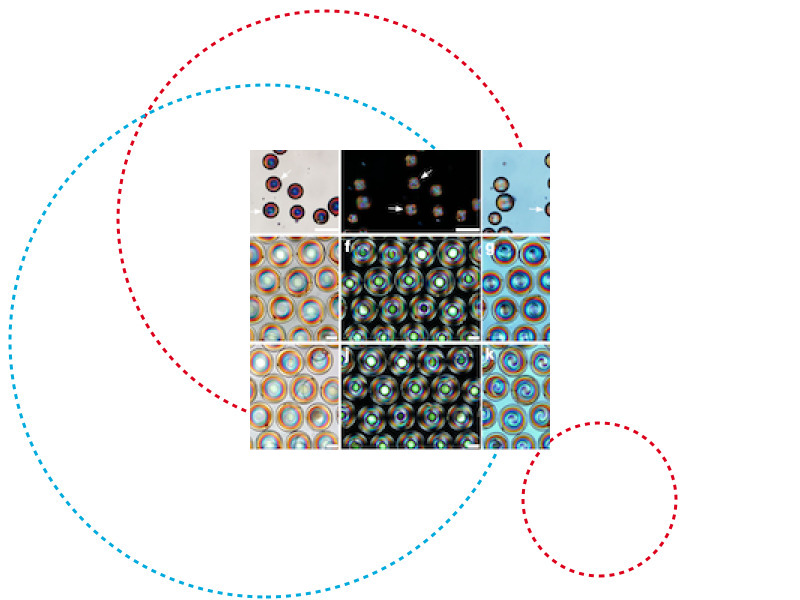Congratulations to our researchers for being featured in the renowned journal Light: Science & Applications, of the Nature publishing group! Their paper proposes a novel solution to use a special type of crystal invented in the team to give physical objects unique and unclonable markers, tackling everything from robot navigation to object authentication.
The paper is written by an interdisciplinary team from the University of Luxembourg’s Faculty of Science, Technology and Medicine (FSTM) and Interdisciplinary Centre for Security, Reliability and Trust (SnT), as well as from the New Jersey Institute of Technology.
Cholesteric spherical reflectors (CSRs) are unique microscopic spheres of liquid crystals. They were invented and are produced by a research team headed by Prof. Jan Lagerwall (FSTM, University of Luxembourg). The crystals are unique because they reflect light in every direction, but only within a narrow wavelength band, which makes them invisible to the human eye while remaining readable by scanners. The current work aims for having robots or augmented reality devices detecting and reading them, but in the future even the camera on a phone could have this functionality.
In their publication entitled “Unclonable human-invisible machine vision markers leveraging the omnidirectional chiral Bragg diffraction of cholesteric spherical reflectors” dated 25 October 2022, the researchers propose the innovative solution of using the crystals to give physical objects unique and unclonable markers. To do this they have developed a methodology to apply them as coatings to physical objects and produce unique QR-code-like images that act as fingerprints. The paper‘s idea is that robots or augmented reality devices can track objects around them with markers made of these crystals.
The paper delivers an overview of all the potential use cases and how they could be implemented thanks to the contribution of robotics expertise. The SnT’s Automation and Robotics (ARG) research group headed by Prof. Holger Voos, and Prof. Mathew Schwartz (architecture, New Jersey Institute of Technology) collaborated to produce these results.
One potential use case is to use the markers to verify the authenticity of an object. While another scenario has them providing a link between physical objects and their digital representations, their digital twins. As a result, if the marked physical object changes, the digital twin can be updated. Vice versa, robots can adapt identified physical objects to match their digital twins.
Another use case is for robot navigation, which can be facilitated by CSR markers because they can be placed in human centered environments to assist robot navigation without changing the human experience, since the markers remain invisible to the human eye. They can also be used with augmented reality devices. For example, these markers can be used on construction sites to help robots navigate, but they can also be used to encode material information. In addition, logistics robots can monitor stock keeping units with the help of these markers.
“We are very proud to be published in such a prestigious journal. Collaborating with an interdisciplinary team that included experts in physics as well as computer science, robotics and automation was an enormous opportunity. It delivered a unique and comprehensive research result,” explained Prof. Voos.
The publication can be found here and an introduction to the topic here.
